- Home
- Equipment Reviews
-
Amplification Digital Integrated Mono Block Preamplifier Phono Solid State Tube Analog Sources Cartridges Tape Tone Arms Turn Tables Digital Sources Digital Disc Players DACs Music Servers Streaming Music Services
-
Accessories Power Conditioners Room Accoustics Racks & Stands Audio Software Other iPod iPod Speakers iPod Headphones iPod Transports Headphones Over Ear On Ear In Ear Headphone Amplifier
-
- Audio News
- Event Reports
- California Audio Show, San Francisco
- Consumer Electronics Show
- T.H.E. Show
- Rocky Mountain Audio Fest
- AXPONA
- Salon Son & Image
- Hi-Fi Show & AV Expo
- High End
- Lone Star Audio Fest
- Capital Audio Fest
- TAVES - Toronto Audio Video Entertainment Show
- AK Fest
- Home Entertainment Show
- New York Audio $ AV Show
- Open House Events
- Spotlight
- Music
- The Columns
- 2024 California Audio Show
Latest Reviews & Audio News
-

PS Audio AirLens and DirectStream DAC Mk2 Review
(July 26, 2024) -

Audio Note UK Meishu Tonmeister 300B integrated amplifier, P3 Tonmeister stereo amplifier, M6 Phono Balanced Preamp Review
(July 12, 2024) -

Douglas Schroeder’s One Year Exploration of Digital Front End Systems
(June 25, 2024) -

Arya Audio Labs RevOpods Anti-Vibration Feet Review
(June 25, 2024) -

Lego Icons Retro Radio Review
(June 14, 2024) -
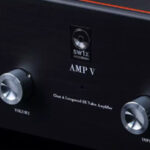
SW1X Audio Design AMP V “Titan” Special directly-heated triode integrated amplifier Review
(June 14, 2024) -
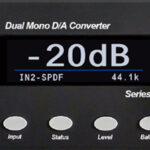
Bricasti Design Model 1 Series II D/A Converter and M5 Network Player Review
(May 24, 2024) -

Star Wars – The Empire Strikes Back – In Concert, May 2, 2024
(May 20, 2024) -
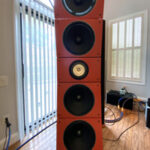
PureAudioProject Quintet15 with Voxativ AC-X field-coil open-baffle loudspeaker system Review
(May 20, 2024) -
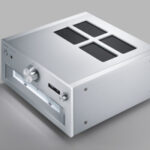
Technics SU-R1000 reference stereo integrated amplifier Review
(May 20, 2024) -
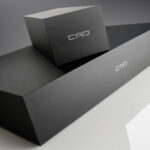
Computer Audio Design GC 1.1 & GC3.1 Ground Control external grounding systems Review
(May 20, 2024) -

Andy Grove of Audio Note UK on IO LTD
(March 23, 2024) -
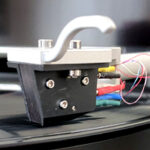
Audio Note UK IO Limited field-coil cartridge system Review
(May 20, 2024) -
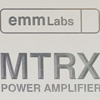
EMM Labs MTRX monoblock Input Board Upgrade Review
(March 7, 2024) -

May 2018 Sibelius Violin Concerto concert video via Berliner Philharmoniker Digital Concert Hall app
(February 16, 2024)
-
Categories
-
Amplification Digital Integrated Mono Block Preamplifier Phono Solid State Tube Analog Sources Cartridges Tape Tone Arms Turn Tables Digital Sources Digital Disc Players DACs Music Servers Streaming Music Services
-
Accessories Power Conditioners Room Accoustics Racks & Stands Audio Software Other iPod iPod Speakers iPod Headphones iPod Transports Headphones Over Ear On Ear In Ear Headphone Amplifier
Site Sections
Copyright ©1996-2024 All Rights Reserved.
Popups Powered By : XYZScripts.com

I don’t usually include much of the manufacturer’s product description, but I do not have the same technical understanding in the digital domain that I do with amps, preamps, turntables, and speakers. And what the heck, there has to be something beyond my understanding to explain why this ordinary, even plain looking one-box, two-channel, Red Book CD player sounds like the way does. So, here is the product description from Audia’s website. Feel free to skip it if you want to.
Product Description:
Cabinet and laser mechanism: The laser mechanism is Philips’ cast-metal Pro 2 model, mounted on a machined base for rigidity and low jitter. Damping materials reduce resonances on the cabinet and laser mechanism.
Digital circuit: The input signal from the laser mechanism as from the inputs is directly (at the same input frequency) converted or upsampled to 192kHz-24bit before the conversion. Audia uses a Crystal Semiconductor 24/192 CS43122 DAC matched to a full balanced, Class A analog output stage. Multiple regulated power supplies are used, along with an anti-jitter circuit with ultra precision reference clock that operates with temperature compensated 2ppm crystal oscillators.
Analog circuit: The analog board is designed with the full balanced AUDIA Flight technique, that is using a current-feedback circuitry, entirely A – class biased discrete components. The high-current low-noise output A-class biased stage, using audio-grade transistors, is not in the feedback loop.
Power supply: To ensure analog and digital circuits of near-perfect source of power, three toroidal transformers (one for analog circuits, one for digital circuits and one for laser mechanism) are used. Input and output connectors: All RCA and balanced XLR connectors are gold-plated. Balanced and unbalanced analog outputs, SPIF coaxial (BNC) and RCA digital inputs, and RCA digital output are provided.
Remote control: The remote control, like the player’s front panel, is made from solid aluminum. It also controls the volume, the inputs and the stand-by functions of Audia Flight PRE or Audia Flight ONE integrated amplifier.
Realization details: Every resistor used in this design is of the “metal sheet” kind with a 1% tolerance, with capacitors in polystyrene, ceramic or polypropylene.\
First impressions:
I simply unpacked it, set it right down where the previous player had been, plugged in the same cables, powered it up and hit play. I had been told it was broken in. It was startling. I had never heard anything quite like it. It was bright, hyper detailed, like some one had turned on huge spotlights on the midrange. Add to this is the worse case of what I call ‘redbook’ bass. I thought I’m not going to want to listen to this player for very long.
Then I thought it might just sound this bad cold. So I put a CD on and was going to put it on repeat and go to Peete’s for coffee, but it doesn’t have a repeat function, so I just pressed play and headed off to Peete’s. One extra dry cappuccino, about an hour of visiting and I’m back. I hit play. I listened and I thought not good but better, so I turned the volume down and went upstairs to watch the Cardinals. During the evening, I went and hit play whenever I thought about it.
The next day I sat down to listen and work. I opened up the iBook and hit play. Dang it. I almost dropped the iBook, but I grabbed it before it hit the floor and I closed it and sat up in my chair to really listen. It seemed the digital fairy, you know, the lesser-known cousin of the tooth fairy, had visited my listening room while I slept.
The spotlights were still there, but now they illuminated the whole frequency range. The detail was still there too, but no longer was it hyper/razor sharp, but clear and fast. There is no doubt about it, this unit is the yang – light to bright and more spectacular than my VSEI-modded Sony SACD 777ES; yin – warm to dark and involving, to borrow a description of a component’s character from HP. It had one unusual characteristic though. It was both involving and it was also very spectacular. Since I am very skeptical of spectacular sounding audio equipment’s long-term listening satisfaction, I thought well, I’ll just listen for a few weeks. I’ll be back.